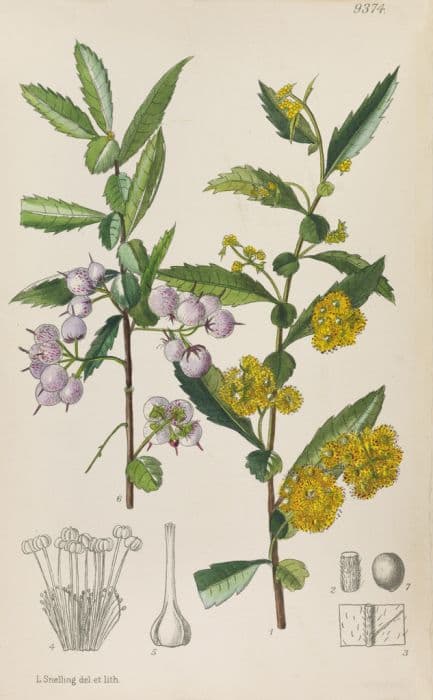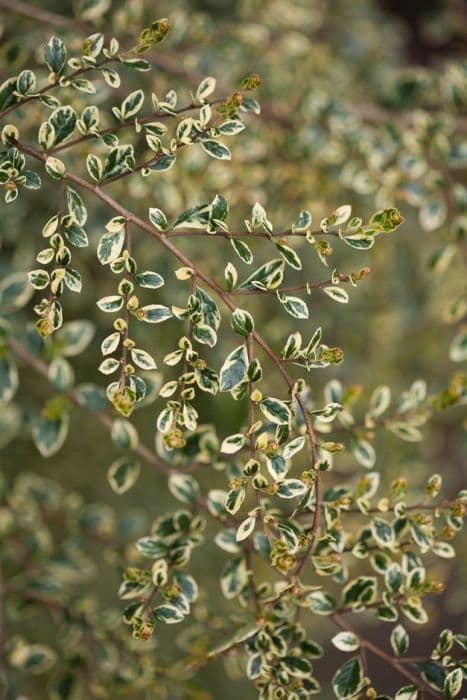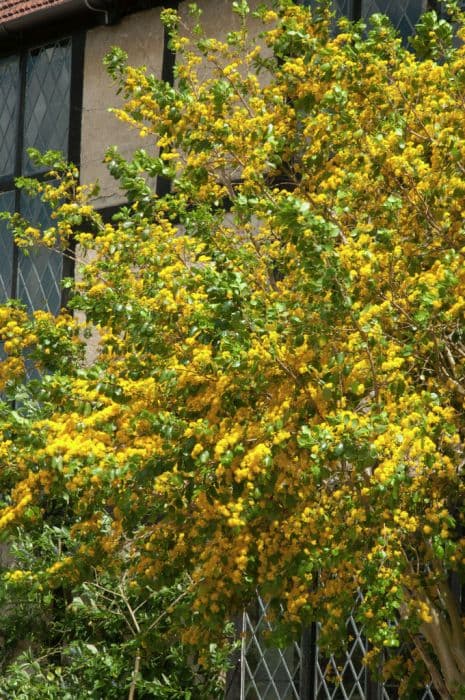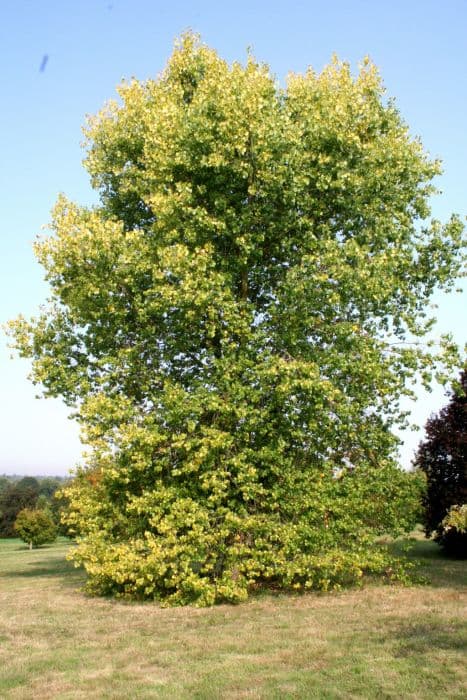White Willow Salix alba var. sericea

ABOUT
Salix alba var. sericea is commonly known as the white willow. This plant typically features long, slender leaves with a silver-green color on the upper side, and a silky, silvery-white hue underneath. The leaves give off a shimmering effect that accentuates the plant's appearance, particularly when they flutter in the breeze. The bark of the white willow is usually rough and deeply fissured, often with a grayish tone. Throughout the growing season, the plant may produce catkins—these are cylindrical flower clusters that are often downy in texture and add gentle aesthetic interest. The branches of the white willow are flexible, and they tend to droop in a picturesque manner, adding to the overall graceful appearance of the plant.
About this plant
 Names
NamesFamily
Salicaceae.
Synonyms
White Willow, Silver Willow, Silky Willow, Sericea Willow.
Common names
Salix alba subsp. sericea, Salix alba var. argentea, Salix alba var. vitellina, Salix babylonica var. sericea, Salix caesia, Salix chloromelaena, Salix pendulina var. sericea, Salix pycnostachya, Salix regalis, Salix sericea.
 Toxicity
ToxicityTo humans
The plant in question, commonly known as White Willow, is generally not considered toxic to humans. There is no widespread evidence or reports of serious toxicity in humans resulting from the ingestion of this plant. However, the bark of the white willow contains salicin, which is a chemical similar to aspirin (acetylsalicylic acid), and in high doses or in individuals with certain sensitivities, it could potentially lead to side effects similar to those of aspirin overdose. These can include stomach pain, nausea, vomiting, and in severe cases, it might lead to conditions like gastrointestinal bleeding, especially if consumed in large quantities.
To pets
White Willow, is not typically listed as a toxic plant to household pets like dogs and cats. However, as with humans, the salicin found in the bark can have effects similar to aspirin. While moderate consumption might not be immediately harmful, ingestion in large amounts could potentially lead to salicylate toxicity, resulting in symptoms such as vomiting, diarrhea, or more serious conditions like stomach ulcers or kidney damage in pets. It's also worth noting that sensitivity can vary among individual animals, and what might be safe for one pet could be harmful to another. As a precaution, pet owners should keep willow bark and leaves away from their pets, and consult with a veterinarian if accidental ingestion occurs.
 Characteristics
CharacteristicsLife cycle
Perennials
Foliage type
Deciduous
Color of leaves
Varies
Height
50-70 feet [15-21 meters]
Spread
20-50 feet [6-15 meters]
Plant type
Tree
Hardiness zones
4
Native area
Europe Asia
Benefits
 General Benefits
General Benefits- Erosion Control: Salix alba var. sericea, also known as silver willow, has a strong root system that helps stabilize soil and prevent erosion along riverbanks and other areas.
- Habitat Provision: It creates habitats for a variety of wildlife, including birds and insects, providing nesting sites and food resources.
- Windbreak: Silver willow can be used in a windbreak to protect crops and soil from wind damage.
- Ornamental Value: With its silvery foliage, it can add aesthetic beauty to landscapes and gardens.
- Shade Provider: The plant can offer shade to understory plants, small animals, and humans during hot weather.
- Soil Improvement: As it sheds leaves and branches, it contributes to the organic matter in the soil, improving soil structure and fertility.
- Streambank Stabilization: Silver willow is often used in riparian restoration projects to stabilize streambanks and reduce sedimentation in waterways.
- Climate Resilience: It is highly adaptable to various climates and can survive in varying conditions, which makes it useful for reforestation and climate change mitigation strategies.
- Acoustic Barrier: The plant can act as a natural sound barrier, reducing noise pollution when planted along highways or between properties.
- Carbon Sequestration: Silver willow plays a role in carbon sequestration, capturing carbon dioxide from the atmosphere and storing it in its biomass.
 Medical Properties
Medical Properties- Anti-inflammatory: The bark of Salix alba var. sericea contains salicin which, after being metabolized, may have effects similar to aspirin, potentially helping to reduce inflammation.
- Analgesic: Salicin can also act as a pain reliever for conditions such as headaches or muscle pain.
- Antipyretic: The presence of salicin may contribute to the plant's ability to reduce fever.
- Rheumatic relief: It has been historically used to relieve symptoms of rheumatic conditions, although its effectiveness and safety are not thoroughly validated.
- Antioxidant properties: Some compounds in the willow bark may contribute to its antioxidant effects, which can help in reducing oxidative stress within the body.
 Air-purifying Qualities
Air-purifying QualitiesThis plant is not specifically known for air purifying qualities.
 Other Uses
Other Uses- Willow bark has been traditionally used in tanning leather due to its high tannin content, which helps in preserving animal hides.
- Willow wood is commonly employed in making cricket bats, as its properties allow for the right balance of weight and shock resistance.
- The lightweight and sturdy nature of willow makes it ideal for making woven objects like baskets, furniture, and even coffins.
- Due to its flexibility and strength, willow branches are often used to create living structures such as tunnels, arches, and playhouses in gardens.
- Willow twigs have been used historically to make fishing traps and cages, taking advantage of their resilience and pliability when wet.
- The wood of the white willow is suitable for carving and has been used to make decorative items and sculptures.
- In some cultures, willow branches are used in traditional rituals and ceremonies, often symbolizing mourning or fertility.
- Willow is used to stabilise riverbanks and prevent soil erosion due to its extensive root system, which holds the soil together.
- White willow's absorbent properties are exploited for cleaning up oil spills and other environmental contaminants in water bodies.
- Willow branches are sometimes used in acoustic instruments manufacturing, where their resonance qualities can affect the tone and sound.
Interesting Facts
 Feng Shui
Feng ShuiThe White Willow is not used in Feng Shui practice.
 Zodiac Sign Compitability
Zodiac Sign CompitabilityThe White Willow is not used in astrology practice.
 Plant Symbolism
Plant Symbolism- Flexibility - Salix alba var. sericea, commonly known as the White Willow, is known for its sturdy yet flexible branches that bend without breaking. This quality lends the white willow the symbolic meaning of adaptability and resilience.
- Healing - The bark of the white willow contains salicin, a compound similar to aspirin. For this reason, the white willow represents healing and the alleviation of pain.
- Growth and Renewal - As a tree that often grows rapidly and tall, the white willow is a symbol of growth and renewal, illustrating the power of reaching out and striving for better horizons.
- Mourning - The willow's association with waterways and its often drooping appearance have led it to be connected with sorrow and mourning, symbolizing the flowing and release of emotions.
- Intuition - Connected with the moon and water, the white willow is also believed to symbolize intuition and deeper understanding, alluding to its natural affinity to the mystical and the subconscious.
 Water
WaterThe White Willow should be watered thoroughly, allowing water to penetrate deep into the soil, which encourages deep root growth. They prefer moist soil conditions and should not be allowed to dry out completely. In general, provide about 1 to 2 gallons per week during the growing season, with more frequent watering necessary during hot, dry spells. The amount can be adjusted depending on rainfall, with less watering needed during periods of heavy rain.
 Light
LightThe White Willow thrives best in full sun conditions, receiving at least six hours of direct sunlight daily. Choose a location that is open and unobstructed by taller structures or trees to ensure ample sunlight exposure.
 Temperature
TemperatureWhite Willows are hardy and can withstand a wide range of temperatures, surviving minimum temperatures down to around -20°F to -30°F. Ideally, they grow well in temperatures above 50°F, and they may not perform as well in areas where the summer heat exceeds 95°F. They favor temperate climates for optimal growth.
 Pruning
PruningPrune the White Willow during its dormancy in late winter to early spring to remove any dead, diseased, or damaged branches and to shape the tree as necessary. Annual pruning not only keeps the tree healthy by enhancing air circulation but also encourages new growth. It's also the time to correct any structural issues within the canopy.
 Cleaning
CleaningAs needed
 Soil
SoilWhite Willow thrives in moist, well-draining soil with a pH of 5.5 to 8.0. A mix of loam, sand, and some organic matter will support its growth.
 Repotting
RepottingWhite Willow trees are typically not repotted as they are large and grow in situ; rather, they may require transplanting every few years if grown in a constrained space.
 Humidity & Misting
Humidity & MistingWhite Willow prefers high humidity environments but is adaptable and can tolerate a range of humidity levels.
 Suitable locations
Suitable locationsIndoor
Place White Willow in a large space with ample light.
Outdoor
Plant in moist area with full sun and space to grow.
Hardiness zone
2-8 USDA
 Life cycle
Life cycleSalix alba var. sericea, commonly known as Silver Willows, begin their life cycle with seed dispersal, which often occurs via wind or water due to their lightweight and water-repellent coats. Upon successful germination in moist soil conditions, the seedlings establish roots and shoot up rapidly due to the species' fast growth rate. The juvenile phase progresses as these young plants develop into saplings, displaying long, silvery-white leaves characteristic of the variety. As they mature, Silver Willows produce flowers in the form of catkins, which are wind-pollinated, resulting in the formation of seeds to complete the reproductive stage. The adult trees are capable of asexual reproduction by putting out root suckers or sprouting from cut stems, a process known as coppicing, which is a notable feature of willows. Over time, these trees can reach a substantial size and live several decades, although they may be shorter-lived than other hardwoods due to susceptibility to diseases and pests.
 Propogation
PropogationPropogation time
Spring-Early Summer
The most popular method of propagating the White Willow, specifically Salix alba var. sericea, is through hardwood cuttings. This technique is typically carried out during the plant's dormancy period, which generally spans from late fall to early spring. To propagate by this method, one would take cuttings about 9 to 12 inches (23 to 30 cm) long from healthy mature branches. Each cutting should have several nodes, which are the points on the stem where leaves attach, and ideal cuts are made just below a node. The cuttings can then be planted directly into moist soil, ensuring at least a few nodes are buried where roots will form. This straightforward method is favored due to its high success rate as willows root easily and quickly.









